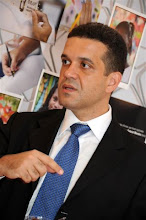Archive for April 2006
Designed to Compete
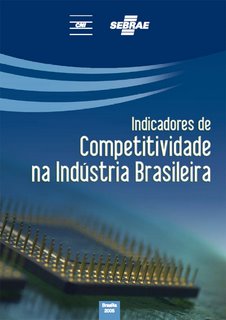 A Brazilian study shows that design is considered a chief strategy for greater industrial competitiveness. Around half of the survey companies invested in design in 2003. The effort was greater in medium and large companies: 56,7%, against 43,2% of micro and small companies. And it pays off.
A Brazilian study shows that design is considered a chief strategy for greater industrial competitiveness. Around half of the survey companies invested in design in 2003. The effort was greater in medium and large companies: 56,7%, against 43,2% of micro and small companies. And it pays off.Compared to company gross revenues there was an increase in investment. In 2003, 18.7% of companies invested more than 2% of gross revenues in technology. For 2005, the forecast is that 30.6% of the companies should increase their investment in design.
The investments in design are showing generally profitable. About 55.6% of medium and large companies stated that the strategy increased their revenues, against 53.7% in micro and small companies. The areas presenting the most significant return in design were the pharmaceutical and food sectors.
Information according to the study on indicators of industrial competitiveness, published by CNI (The National Confederation of Industries) and Sebrae(Brazilian Micro and Small Business Support Service) [1]. The information in the study was collected between October 2004 and March 2005, and is based on a questionnaire, completed by 743 businessmen nationwide.
[1] Sebrae is a great partner of the small Brazilian entrepreneur. It is a non-profit private institution, supporting the development of small-sized business activity, a result of the union of both the public and private sectors, and the country's main fostering and research entities.
Friday, April 28, 2006
Posted by Fabiano Gallindo
Self-sufficiency in petroleum
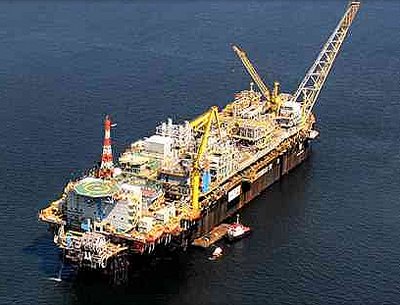 After 50 years of research and development on the energy sector Brazil has reached self-sufficiency in petroleum, guaranteed with the entry into operation of platform Petrobras 50 (P-50). The P-50 structure will be the largest in operation in the country, adding over 180,000 barrels of oil to Brazilian production.
After 50 years of research and development on the energy sector Brazil has reached self-sufficiency in petroleum, guaranteed with the entry into operation of platform Petrobras 50 (P-50). The P-50 structure will be the largest in operation in the country, adding over 180,000 barrels of oil to Brazilian production.Apart from producing oil, P-50 will have capacity for compression of six million cubic metres of natural gas and will store another 1.6 million barrels of oil. According to the concept adopted by Petrobras ( SAO:PETR3, SAO:PETR4, NYSE:PBR), self-sufficiency is the availability of oil produced at equal or greater or equal volumes to the refining capacity in the country, for the supply of the domestic market.
Today, the domestic demand for the product is around 1.8 million barrels (the same as the National Refining Park), whereas production after the start of operation of the P-50 should reach year-end at a daily average of between 1.9 million and 1.91 million barrels
Next year as well, Petrobras expects to place in operation platform P-34, which will be installed in the Jubarte Field, in the Espírito Santo Basin. The forecast is that this platform will have a daily production of 60-70 thousand barrels of petroleum.
The main activities of Petrobras are to create an infrastructure for exploration, production and supply of byproducts for the industrial progress of Brazil. These areas together operate with another eleven supporting entities called services and form the Petrobras System*.
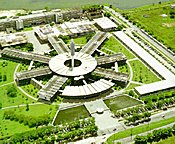 Two of these services are fundamental: the Cenpes - Petrobras Research Center, that has one of the most advanced technologies in the world and attends several Petrobras segments, and the Engineering Service, responsible for putting the corporate projects into practice through its operations.
Two of these services are fundamental: the Cenpes - Petrobras Research Center, that has one of the most advanced technologies in the world and attends several Petrobras segments, and the Engineering Service, responsible for putting the corporate projects into practice through its operations.The state enterprise plans to build another around 12 production units scheduled to go into operation by 2010, with the hope to reach 2010 producing 2.3 million barrels of oil in Brazil.
*Petrobras System includes four subsidiaries besides the holding operations: Petrobras Química S.A - Petroquisa (SAO:PTQS3, SAO:PTQS4), operating in the petrochemical industry, Petrobras Disctibuidora S.A. - BR, in petroleum byproduct distribution, Petrobras Internacional S.A. - Braspetro, in exploration and production and in providing technical and administrative services overseas and Petrobras Gás S.A. - Gaspetro, responsible for the Bolivia-Brazil gas pipeline and Petrobras Transporte S.A. - Transpetro, created to execute the maritime shipping of the company activities.
Friday, April 21, 2006
Posted by Fabiano Gallindo
Montana Parruda
AUTOMOTIVE SPRAY
DESIGN MFC Design | Design Center of Parana | Santa Catarina – PR
CLIENT Montana Industry of Machines | Santa Catarina – PR
IN THE LAST TWO DECADES, BRAZIL HAS BECOME AN INCREASINGLY INFLUENTIAL EXPORTER in several agricultural markets. From 1992 to 2002, Brazilian net exports of soybeans, soybean meal, and soybean oil increased 444, 65, and 288 percent, respectively, giving Brazil a 30 to 40 percent share of world trade in these commodities. Over the same period, Brazil switched from being a net importer of corn and cotton to being a net exporter, providing 7.7 and 5.8 percent, respectively, of corn and cotton traded in 2003. The modern agriculture presents each time more demand for technology. Ongoing research at Embrapa (Empresa Brasileira de Pesquisa Agropecuária), the Brazilian Agricultural Research Corporation and other public and private organizations are among to change the Brazilian large-scale, commercially oriented, forward-looking operations suited to compete in commodity markets that are constantly driven to increase productivity and reduce costs. Intent to this reality, the Montana Industry of Machines decided to locate itself as manufacturer of products of high quality and agregated value. Amongst the products, the automotive spray Parruda was distinguished. Baptism of Parruda is to emphasize robustness and performance, MH-3025 H is an equipment of great efficiency, whose project unites technology, style and comfort. Its closed cabin and endowed with air-conditional guarantees security against contaminations. It still possesss characteristic as bold lines and good productivity, that makes of the product a competitive example of design as distinguishing. Developed by MFC Design, with coordination of the Design Center of Paraná, the Parruda provided to the Montana manufacturer a leverage in the invoicing of the 100% order, passing of US$ 12.5 million annual to US$ 22.5 million in the first year of production. In accordance with sells registered, in the past few years a number of 8 units was commercialized in 2000 , in 2001 this number passed to 35 units and in 2002 it reached about 100 units•
Fiocruz
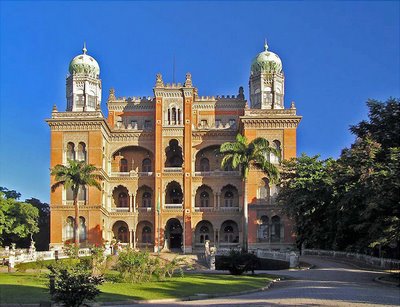
For a long time, there has been controversy about the relative values of research and development (R&D) on new technologies for health and of the identification and implementation of best policies for national healthsystems. Those who support expanded support for R&D argue that only through new and improved technologies will it be possible to effectively address some of the greatest health problems facing poor people worldwide. Investments in research today will pay off by helping people more effectively than with current technologies and will help forever. New real scientific advances last for a very long time. Only with safe and effective vaccines will it be possible to control AIDS, malaria and tuberculosis. Those who support focus on policy argue that very significant progress could be made in controlling disease today with existing technologies and known policies. Money spent on research that may not pay off for decades could be allocated to known interventions that would save lives today. For example, malaria and other tropical diseases might be largely controlled in Brazil with the wide-scale availability of bed nets and advanced therapies.
Inaugurated on May 25, 1900 under the name of Federal Serotherapy Institute, Fiocruz* was given the mission of fighting the great problems of public health in Brazil. Therefore, Fiocruz became a think tank concerned with Brazilian reality and experimental medicine.
Fiocruz is located on a 800,000-square meter campus at Manguinhos, a suburban area in the North Side of Rio de Janeiro. Around three historical buildings of the old Federal Serotherapy Institute – the Moorish Pavilion, the Watch Pavilion and the Mews -, there are ten of Fiocruz’s thirteen technical-scientific units and all the technical and administrative support units. Another five units are located at Rio de Janeiro, Belo Horizonte, Salvador, Recife e Manaus.
Today the institution is noted for its excellence in a wide range of health activities, including research development, hospital and ambulatory care services; production of vaccines, drugs, reactants, and diagnostic kits; human resources teaching and training; information and communication regarding health, science and technology; quality control of products and services, and the implementation of social programs. It has over 7,500 employees and health professionals with different engagements, a workforce proud of being at the service of life.
FIOCRUZ
Telephone: (+5521) 25984242
Site: www.fiocruz.br
* The Fundação Oswaldo Cruz (FIOCRUZ) is a public institution linked to Ministry of Health and one of the main technical and scientific supports to the Unique Health System - SUS - activities. The FIOCRUZ institutional mission characteristics in education, research, production and services of information allows a good performance in the field health information.
Inaugurated on May 25, 1900 under the name of Federal Serotherapy Institute, Fiocruz* was given the mission of fighting the great problems of public health in Brazil. Therefore, Fiocruz became a think tank concerned with Brazilian reality and experimental medicine.
Fiocruz is located on a 800,000-square meter campus at Manguinhos, a suburban area in the North Side of Rio de Janeiro. Around three historical buildings of the old Federal Serotherapy Institute – the Moorish Pavilion, the Watch Pavilion and the Mews -, there are ten of Fiocruz’s thirteen technical-scientific units and all the technical and administrative support units. Another five units are located at Rio de Janeiro, Belo Horizonte, Salvador, Recife e Manaus.
Today the institution is noted for its excellence in a wide range of health activities, including research development, hospital and ambulatory care services; production of vaccines, drugs, reactants, and diagnostic kits; human resources teaching and training; information and communication regarding health, science and technology; quality control of products and services, and the implementation of social programs. It has over 7,500 employees and health professionals with different engagements, a workforce proud of being at the service of life.
FIOCRUZ
Telephone: (+5521) 25984242
Site: www.fiocruz.br
* The Fundação Oswaldo Cruz (FIOCRUZ) is a public institution linked to Ministry of Health and one of the main technical and scientific supports to the Unique Health System - SUS - activities. The FIOCRUZ institutional mission characteristics in education, research, production and services of information allows a good performance in the field health information.
Sunday, April 09, 2006
Posted by Fabiano Gallindo
Futura Channel
Futura is a Brazilian educational television channel that interacts with people's lives inside and outside of the television set.
Since its creation in 1997, Canal Futura has become the reference for educational projects in Brazil through its experience with social private investment.
Today companies have become more interested not only in their products and public image but in the way they connect to the community where they do business. Especially in relation to its employees, business partners, communities and environment.
That is the role that Futura plays, interacting with people from all over and giving the opportunity to brazilian companies to reach our population trought tele-education and projects in the social area.
For the last seven years, Futura has presented educational programs and professional "how-to-do" workshops such as "Futura Profession"; Language and Reading programs such as "Some Words" and "Tunning the Language"; entrepreneurial workshops such as "Hand Made"; and a variety of educational programming for the entire family like "Teca on TV" and "Knowledge grows on trees".
Programs like "Telecurso 2000", update professionals in the metal and mechanical field through 360 television classes and "Telecurso 2000 - 1° Grau"is aimed at workers at a low school level, youngsters and adults, the program offers classes on the contents of high school. Finnaly, "Telecurso 2000 - 2º Grau" is aimed at workers at a low school level, youngsters and adults, the program offers classes on the contents of middle school.
In all the country, more than 48 million people can access this high quality educational programming. Among the potential audience, 20 million people regularly watch Futura.
Since its creation in 1997, Canal Futura has become the reference for educational projects in Brazil through its experience with social private investment.
Today companies have become more interested not only in their products and public image but in the way they connect to the community where they do business. Especially in relation to its employees, business partners, communities and environment.
That is the role that Futura plays, interacting with people from all over and giving the opportunity to brazilian companies to reach our population trought tele-education and projects in the social area.
For the last seven years, Futura has presented educational programs and professional "how-to-do" workshops such as "Futura Profession"; Language and Reading programs such as "Some Words" and "Tunning the Language"; entrepreneurial workshops such as "Hand Made"; and a variety of educational programming for the entire family like "Teca on TV" and "Knowledge grows on trees".
Programs like "Telecurso 2000", update professionals in the metal and mechanical field through 360 television classes and "Telecurso 2000 - 1° Grau"is aimed at workers at a low school level, youngsters and adults, the program offers classes on the contents of high school. Finnaly, "Telecurso 2000 - 2º Grau" is aimed at workers at a low school level, youngsters and adults, the program offers classes on the contents of middle school.
In all the country, more than 48 million people can access this high quality educational programming. Among the potential audience, 20 million people regularly watch Futura.
Saturday, April 08, 2006
Posted by Fabiano Gallindo
Packaging for Claro mobile phones
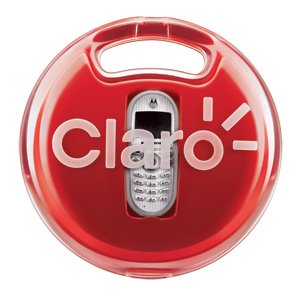
Packaging composed of an injected base in high impact polystyrene and an injected lid in crystal polystyrene. The packaging also includes two PET thermoformed internal parts that are used as a cradle for the handset and other accessories. Manufactured by Sanremo S.A. from Esteio, Brazil and designed by GAD´DESIGN from São Paulo, Brazil. Was Winner in the Packaging/globe packaging iF product design award 2006.
Friday, April 07, 2006
Posted by Fabiano Gallindo
Spirit Beach sunshade
 The “Spirit” sunshade has two characteristics that set it apart: First, it opens the “wrong” way round, which means an automatic adaptation to the force of strong winds. Second, its helical shape was created to make the sunshade easier to install. The frame is made of fiberglass and PP injected parts, and the pipes of anodized aluminum, making the product at once durable and ecologically responsible. The main advantages of the sunshade are that it is easy to open and plant in the ground, has a storage pouch and air cushion in the upper part that serve to reduce the temperature below, and also has two lower, zippered openings on opposite sides that offer access to the upper part.
The “Spirit” sunshade has two characteristics that set it apart: First, it opens the “wrong” way round, which means an automatic adaptation to the force of strong winds. Second, its helical shape was created to make the sunshade easier to install. The frame is made of fiberglass and PP injected parts, and the pipes of anodized aluminum, making the product at once durable and ecologically responsible. The main advantages of the sunshade are that it is easy to open and plant in the ground, has a storage pouch and air cushion in the upper part that serve to reduce the temperature below, and also has two lower, zippered openings on opposite sides that offer access to the upper part.Designed by Celso M. Santos and Christian Albanese from Rio 21 Design Ltda. from Rio de Janeiro, Brazil; manufactured by W. S. de Campo Grande Moldes e Peças Plásticas Ltda. from Rio de Janeiro, Brazil.
Sunday, April 02, 2006
Posted by Fabiano Gallindo






